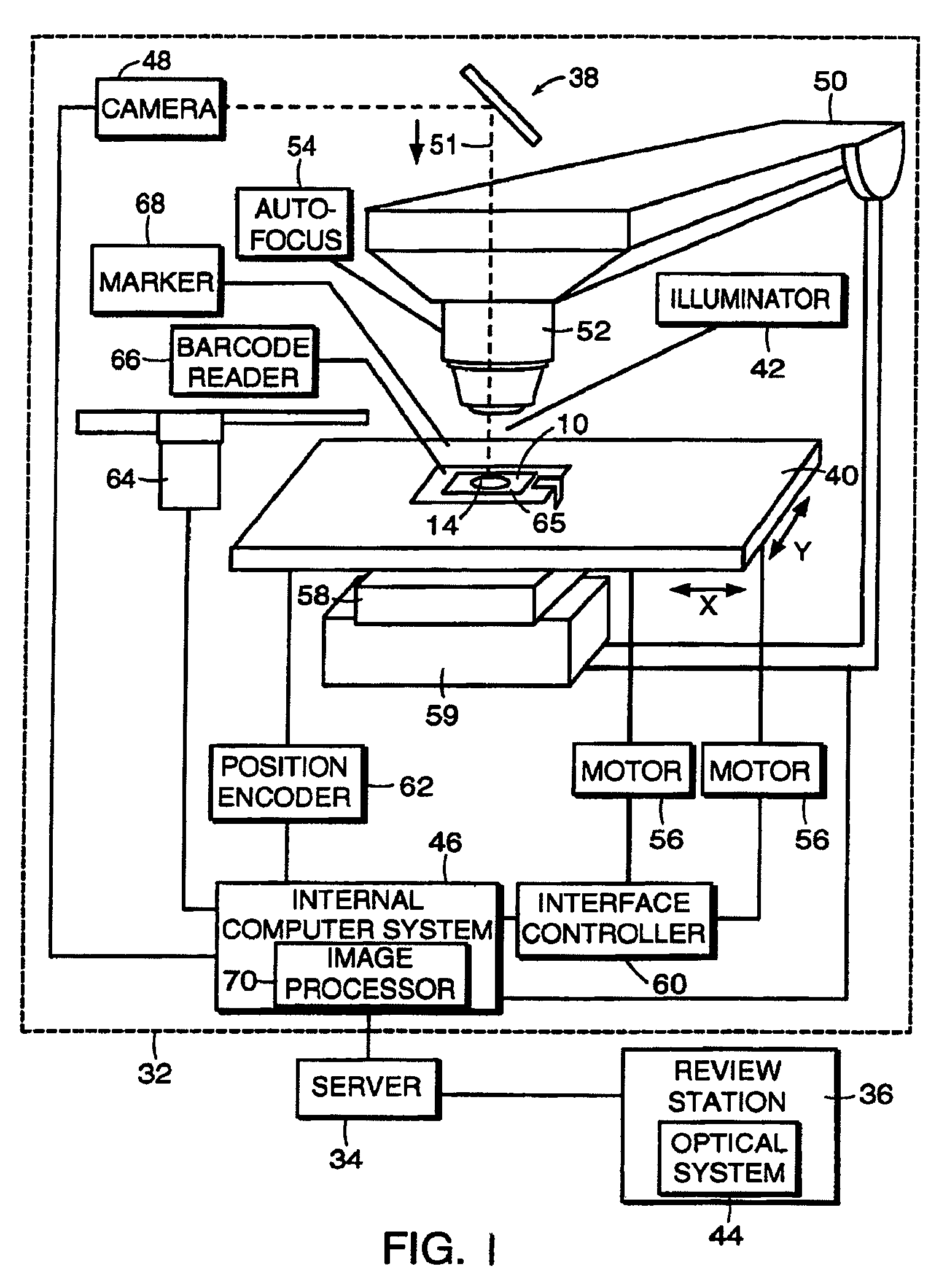Method for assessing image focus quality
a technology of image focus and focus quality, applied in the field of electronic imaging systems, can solve the problems of difficult automatic assessment of focus quality by computers, difficult for computers to determine the distance between the imaged focal plane and the ideal or optimal focal height,
- Summary
- Abstract
- Description
- Claims
- Application Information
AI Technical Summary
Benefits of technology
Problems solved by technology
Method used
Image
Examples
Embodiment Construction
[0023]FIG. 1 illustrates an exemplary specimen imaging apparatus 32 of the present invention. The image processing apparatus 32 includes a first optical system 38, and a slide stage 40 movable relative thereto. A review station 36 is provided and includes a second optical system 44, and is connected to the image processing system 32 via the server 34. An internal computer system 46 controls the first optical system 38 and is in communication with the server 34.
[0024]The first optical system 38 includes an electronic camera 48, such as a CCD camera 48, and a microscope 50. The microscope 50 is preferably an automated microscope. The automated microscope 50 may include features to provide fast, precise imaging of an area of a slide 10 positioned in the optical path 51 of the microscope 50, such as an autofocusing mechanism 54. The first optical system 38 may include one or more lens systems 52. An illuminator 42 may provide illumination for the specimen 14 deposited on the slide 10 an...
PUM
 Login to View More
Login to View More Abstract
Description
Claims
Application Information
 Login to View More
Login to View More - R&D
- Intellectual Property
- Life Sciences
- Materials
- Tech Scout
- Unparalleled Data Quality
- Higher Quality Content
- 60% Fewer Hallucinations
Browse by: Latest US Patents, China's latest patents, Technical Efficacy Thesaurus, Application Domain, Technology Topic, Popular Technical Reports.
© 2025 PatSnap. All rights reserved.Legal|Privacy policy|Modern Slavery Act Transparency Statement|Sitemap|About US| Contact US: help@patsnap.com



